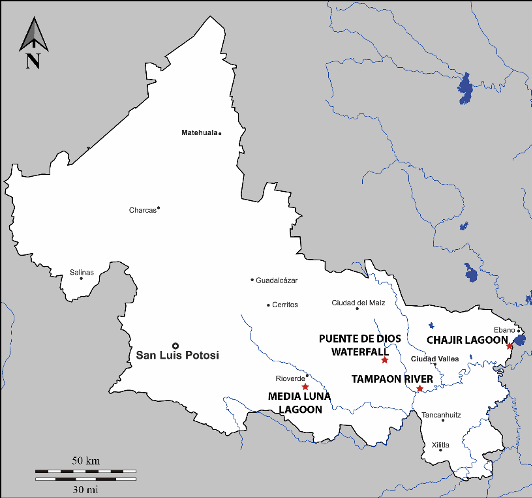 |
|
The polluting hydrocarbons in water bodies of the state of San Luis Potosí were evaluated and determined in June 2019, to choose a representative carbon source for the airlift bioreactor. The sampling points were Chajir Lagoon, Puente de Dios, Tampaón River and Media Luna Lagoon, and aliphatic hydrocarbons with a carbon number between C8-C32 were found. We reported high concentrations of pollutants, such as eicosane (up to 2,603.22 ± 1,202.09 mg L-1) and heneicosane (up to 3,971.21 ± 2,260.45 mg L-1). The airlift bioreactor was designed based on hydrodynamic parameters: holdup gas (εG), Sauter mean diameter (d32) and Reynolds number (Re) that increased with the superficial gas velocity (Ug), both in the riser zone and downcomer zone and from Ug = 1.92 cm s-1, mixing and mass transfer are favoured in a 2 L airlift reactor. Also, the hydrodynamic parameters evaluated were higher in the riser zone. Furthermore, the consortium isolated by the Gutiérrez-Rojas working group composed of Xanthomonas sp., Acinetobacter Bouvetii, Shewanella Sp., and Defluvibacter lusatiensis, was able to consume 98.21% of the initial diesel concentration (13,000 mg L-1). The airlift bioreactor evaluated in the investigation proved to be workable for the remediation of water bodies.
Keywords: Airlift bioreactor, Remediation, Pollution, Hydrodynamic, Aliphatic hydrocarbon.
|
|
 |

